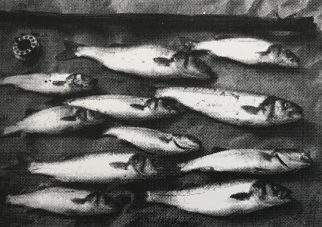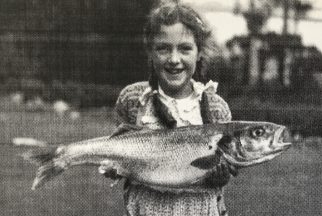The Lure Of Big Bass (Part 1) by Donovan Kelley
I have never been interested in competitive fishing – and have only limited interest in records. Peter Collins, the genial former editor of Sea Angler, asked me once if I caught many bass over 10lbs, and whether I directed my fishing specially to the big ones. The answer in each case was, No. I told him I was much more concerned with the general run of adult bass: fish in the 2 to 5lb range mainly, in shore fishing: with a few up to 7lbs and the occasional 8 or 9 pounder. Fish over l0lbs are, for the shore angler, exceptional. To pursue them speciallv requires not so much angling skill and knowledge as superhuman dedication and patience – and luck.

Just occasionally an exceptionally abundant year-class comes along which can materially alter the picture. If it hasn‘t been exploited to near-extinction in its nursery years that class will provide magnificent fishing in its later years. The 1959 class is a well-remembered example. In its youth it did not suffer the savage gill-net exploitation which was the curse of later classes. It dominated the angling scene from 1967 on, and by 1976 six pounders were the rule rather than the exception. A few years later it was providing record numbers of double-figure fish.
The 1976 class was another exceptional one – initially. But after two years it came under heavy gill-net pressure and the young stock was decimated: few reached maturity.
We now have another exceptional class: 1989. By chance it enjoyed maximum benefit from the Nursery Regulations which had just come into force and which in their
first two years were accorded a high degree of observance by fishermen. Later the netters realised that enforcement was negligible and were soon back into their bad old ways. But the 1989 class had by a lucky chance grown fast in its first year, and it left the nurseries a year earlier than usual – before gill-netting resumed on its heavy former scale. Since then they have been heavily exploited in the wintering area, first by gill-netters off west Cornwall and more recently by pair trawlers in the Channel. As a result their numbers are now patchy. It remains to be seen whether there are sufficient survivors in 2006 to provide sport comparable to that of the 1959 class in 1976.
It will be obvious from the above that the size and numbers of bass to be found in coastal waters in any year depends on the interaction of those two factors: the success of spawning and the level of exploitation, especially in the nursery years. Many anglers recently have asked me why they are finding so few bass in the 3 to 4lb class: the size which often predominates inshore. The answer is that we had three successive spawning failures in the relevant years. The 1985 class was weak – and was severely reduced by casualties in the cold winter which followed (in my local Camel all the class died). The 1986 class was even weaker, and in the south-west (at least) 1987 was little better. Result: acute scarcity of bass in the 3 to 4lb range. Fortunately some of the 1989 class are now near 3lb, thanks to that fast early growth.

There is another reason why my interest in the big ones is limited: they tend to be disappointing antagonists on the hook. Often, in shore fishing, thev are solitary fish which have become fat and lazy. Their fight is more of a slugging match in which they are seldom by their own initiative more than 20 yards from where they were hooked. Coming from a lifelong dedicated bass angler this perhaps reads rather strangely; and I’m bound to say that I recall two or three cases, fish of not much more than 8lbs, where my reel was nearly emptied of its 150 yards before 1 could halt them. But they were the exceptions. I merely “speak as I find”, from experience almost exclusively on shore, and acknowledge that offshore bass that have to cope with fast currents may well be more lively.
Having got these very personal views off my chest I have to admit that big bass do have a fascination of their own: a fascination such as few other species command. I own too to an admiration for those hardy shore anglers who set their sights on big bass. A quick look through my records throws up several names. In North Wales Arthur Burslem reported twelve of 10 to 14lb 3.5oz between 1980 and 1985: also in North Wales (Menai Straits) Alan Vaughan reported eight of 10 to 12lb 12oz between 1977 and 1984: and at Dover Richard Tunnicliffe reported seven of 10 to 14lb 12oz in 1976-1985. They each sent me scales from some of their fish. Those were the double-figure years of the abundant 1959 class, but curiously only four of the twelve for which I had scales were of that class: so they did not have what might be thought to have been special advantages, then.
From ‘Life with Bass’ by Donovan Kelley